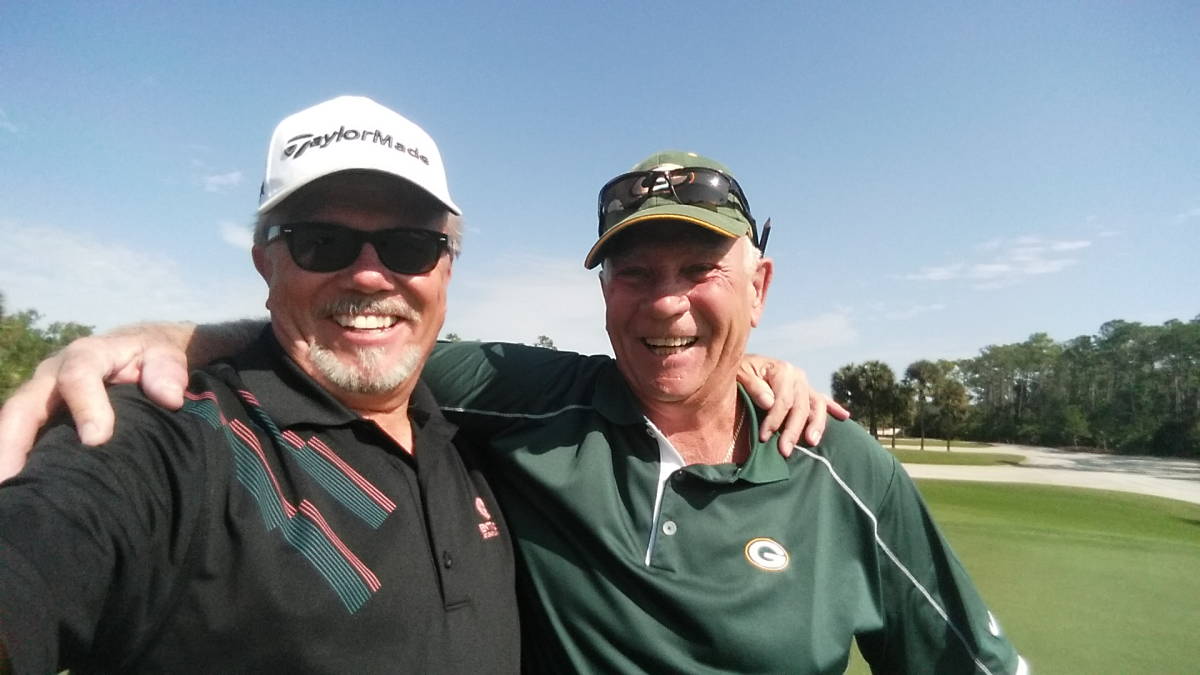 Living in Southern Utah or Mesquite this time of year can be less than perfect for golf due to much cooler days and downright cold ones from December through February. We’ve even had a bit of snow from time to time. So that leaves us with one option: get in a plane and take a golf trip to where it’s sunny and warm, right? At least, that was my thinking when I made plans to visit southwestern Florida in January. This El Niño thing is wreaking havoc on my golf obsession. How about you?
Living in Southern Utah or Mesquite this time of year can be less than perfect for golf due to much cooler days and downright cold ones from December through February. We’ve even had a bit of snow from time to time. So that leaves us with one option: get in a plane and take a golf trip to where it’s sunny and warm, right? At least, that was my thinking when I made plans to visit southwestern Florida in January. This El Niño thing is wreaking havoc on my golf obsession. How about you?
Anyway, I did take that eight-hour flight to Fort Myers, Fla., the week of Jan. 9 hoping to find fabulous golf and warm sunshine. The golf for this trip was indeed fabulous, but the weather felt more like here right now, with a bit more humidity. All in all, we managed to finish four superb rounds of golf between the rains in cool conditions on four distinctly unique tracks. I’d highly recommend taking a trip to give these courses a try when El Niño is a mere memory.
The first stop on my golf trip was Raptor Bay. I spoke with general manager Ed Weber briefly about what he t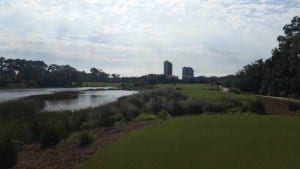 hought made Raptor Bay unique and special.
hought made Raptor Bay unique and special.
“First, we are a resort-style golf course.” He said. “We don’t have a lot of traditional bunker or forced carries. It’s not that it’s easy, but it does offer so many options for golfers to play different types of shots. It’s all the same Bermuda grass throughout—TifEagle Bermuda—on the greens so you can try bump shots, putt off the greens, or flop shots if you’re game’s up to it. We’re a Raymond Floyd-designed golf course.”
Floyd was once asked, “How do you design a course that appeals to the 2 handicap and an 18 handicap.” “You do it with the greens,” he said. Their greens 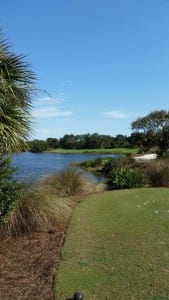 don’t have severe undulation but do require a good putting stoke that will be rewarded via a true roll.
don’t have severe undulation but do require a good putting stoke that will be rewarded via a true roll.
I soon realized what Weber meant when he said there were no traditional bunkers: more like a crushed shell—very similar to our desert sand mixed with small pebbles, yet firm and consistent—that doubles as their cart paths and waste bunkers. They maintain their greens at 9.5, perfectly manicured with just enough break to keep it interesting. This course was beautiful and fun. I’d give it solid 4.
The next course on our golf trip was a more traditional-style course dating back nearly 100 years when the famous designer Donald Ross was turning heads. You may know that name thanks to his work at Pinehurst N.C., home of the 2014 U.S. Open. I’m talking about the Fort 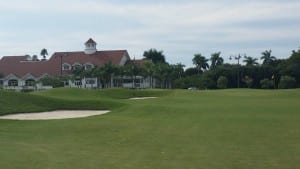 Myers Country Club, a public golf course with some very famous founders that was frequented by names like Thomas Edison, Henry Ford, and owner of Standard Oil Ambros McGregor—all former members who were very involved in turning a sleepy little town in southwestern Florida into a robust tourist community of over 600,000 residents. The lodge at the Fort Myer Country Club is something you must see, and take time to enjoy a meal. I had, by far, the best hamburger I’ve ever eaten! The course went though a $5.8 million redesign within the last two years that added new lakes, bunkers, and greens, all without supplemental revenue from the city. They are self-sustained to keep taxes low, which is pretty amazing in this day and age. I loved this course for its rich history and old-fashioned feel of golf’s traditional roots.
Myers Country Club, a public golf course with some very famous founders that was frequented by names like Thomas Edison, Henry Ford, and owner of Standard Oil Ambros McGregor—all former members who were very involved in turning a sleepy little town in southwestern Florida into a robust tourist community of over 600,000 residents. The lodge at the Fort Myer Country Club is something you must see, and take time to enjoy a meal. I had, by far, the best hamburger I’ve ever eaten! The course went though a $5.8 million redesign within the last two years that added new lakes, bunkers, and greens, all without supplemental revenue from the city. They are self-sustained to keep taxes low, which is pretty amazing in this day and age. I loved this course for its rich history and old-fashioned feel of golf’s traditional roots.
Our third round took us to a much more modern and upscale design. Old Corkscrew is a Jack Nicklaus signature course. It’s difficult, beautiful, and well-thought-out—not a course you 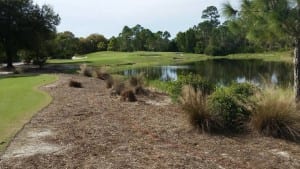 want to bring a beginner to. The greens were a slick 11, and the fairways cut like some greens I’ve played, an advantage if you were just off the green because the putter became your best friend unless you knew how to pinch a tight wedge in close. This course is a must-play if you’re a serious stick. It will challenge you in ways that will make you cry or sing your own praises at the 19th hole. My partner played better here than any of the other courses we played. I, on the other hand, struggled with its intensity and severely undulating greens. All in all, it was the most beautiful and challenging course I’ve played in years.
want to bring a beginner to. The greens were a slick 11, and the fairways cut like some greens I’ve played, an advantage if you were just off the green because the putter became your best friend unless you knew how to pinch a tight wedge in close. This course is a must-play if you’re a serious stick. It will challenge you in ways that will make you cry or sing your own praises at the 19th hole. My partner played better here than any of the other courses we played. I, on the other hand, struggled with its intensity and severely undulating greens. All in all, it was the most beautiful and challenging course I’ve played in years.
Our forth and final round was a wonderful conclusion for our golf trip to four must-play courses near Fort Myers. Eastwood is another city course without the expensive price that 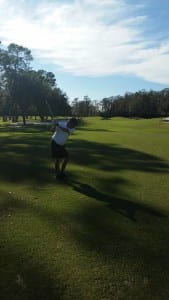 looked and played like a $100 plus track. We got hit by two intense rain storms and two tornado touchdowns during my stay, but these courses all did extremely well in fending off the deluge of water pouring out of the sky! Eastwood is blessed with thousands of mature trees and well-positioned water hazards. Florida is relatively flat, but I felt like there was plenty of diversity and challenges in navigating its tight fairways and beautifully manicured greens. Both my partner and I gave this course a big thumbs up as a must play and play often. I’d say it’s probably a local favorite thanks to the price, beauty, and diverse terrain it offers for all skill levels.
looked and played like a $100 plus track. We got hit by two intense rain storms and two tornado touchdowns during my stay, but these courses all did extremely well in fending off the deluge of water pouring out of the sky! Eastwood is blessed with thousands of mature trees and well-positioned water hazards. Florida is relatively flat, but I felt like there was plenty of diversity and challenges in navigating its tight fairways and beautifully manicured greens. Both my partner and I gave this course a big thumbs up as a must play and play often. I’d say it’s probably a local favorite thanks to the price, beauty, and diverse terrain it offers for all skill levels.
There you have it. My week in southwestern Florida, playing what I thought was the perfect balance of difficulty, price, and design, was wet and wild. With so many golf destination options in Florida, I’d have to say Fort Myers exceeded my expectations. Golf is a great excuse to discover new cities, great food, and capture priceless memories with close friends. Get out there and play somewhere you’ve never played before. Do your research, talk to others, and just do it! It’s so worth it. Even if the weather has other plans!
Raptorbaygolfclub.com l cityftmyers.com l oldcorkscrew.com l golfateastwood.com
See ya on the links.




